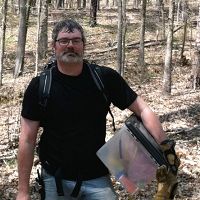Holbrook et al., 2012
Geophysics in the Critical Zone: constraints on deep weathering and water storage potential in the Southern Sierra CZO
Holbrook, W., Riebe, C.S., Hayes, J.L., Reeder, K., Harry, D.L., Malazian, A.I., Dosseto, A., Hartsough, P.C., and Hopmans, J.W. (2012)
Fall Meeting, American Geophysical Union, December 2012. Abstract EP41I-03.
-
Boulder, Calhoun, Eel, Reynolds, Sierra, COLLABORATOR
-
Sierra, INVESTIGATOR
-
Shale Hills, Sierra, INVESTIGATOR, COLLABORATOR
-
Sierra, GRAD STUDENT
-
Luquillo, Sierra, COLLABORATOR
-
Sierra, INVESTIGATOR
-
Sierra, COLLABORATOR
Abstract
Quantifying the depth and degree of subsurface weathering in landscapes is crucial for quantitative understanding of the biogeochemistry of weathering, the mechanics of hillslope sediment transport, and biogeochemical cycling of nutrients and carbon over both short and long timescales. Although the degree of weathering can be readily measured from geochemical and physical properties of regolith and rock, many distributed samples are needed to measure it over broad spatial scales. Moreover, quantifying the thickness of subsurface weathering has remained challenging, in part because the interface between altered and unaltered rock is often buried at difficult to access depths. To overcome these challenges, we combined seismic refraction and resistivity surveys to estimate regolith thickness and generate representative hillslope-scale images of subsurface weathering and water storage at the Southern Sierra Critical Zone Observatory (SSCZO). Inferred seismic velocities and electrical resistivities of the subsurface provide evidence for a weathering zone with thickness ranging from 10 to 35 m (average = 23 m) along one intensively studied transect. This weathering zone consists of roughly equal thicknesses of saprolite (P-velocity < 2 km/s) and moderately weathered bedrock (P-velocity < 4 km/s). We use a rock physics model of seismic velocities, based on Hertz-Mindlin contact theory, to estimate lateral and vertical variations in porosity as a metric of water storage potential along the transect. Inferred porosities are as high as 55% near the surface and decrease to zero at the base of weathered rock. Model-predicted porosities are broadly consistent with values measured from physical properties of saprolite, suggesting that our analysis of the geophysical data provides realistic estimates of subsurface water storage potential. A major advantage of our geophysical approach is that it quickly and non-invasively quantifies porosity over broad vertical and lateral scales. Our results indicate that saprolite is a crucial reservoir of water, potentially storing an average of 3 m of water along a forested slope in the headwaters of the SSCZO.
Citation
Holbrook, W., Riebe, C.S., Hayes, J.L., Reeder, K., Harry, D.L., Malazian, A.I., Dosseto, A., Hartsough, P.C., and Hopmans, J.W. (2012): Geophysics in the Critical Zone: constraints on deep weathering and water storage potential in the Southern Sierra CZO. Fall Meeting, American Geophysical Union, December 2012. Abstract EP41I-03..
Explore Further







